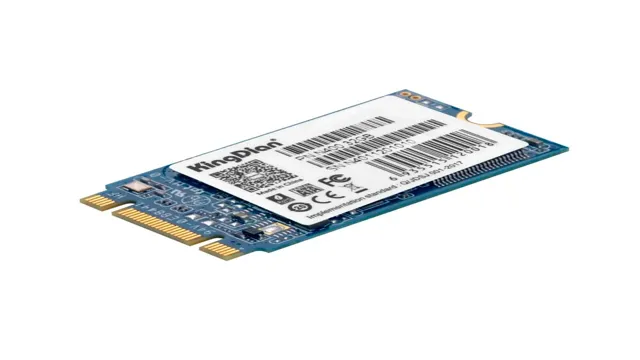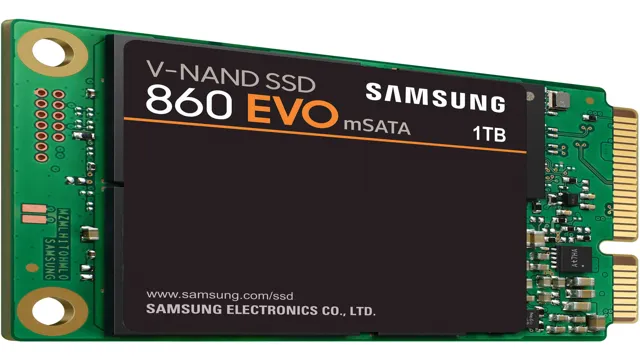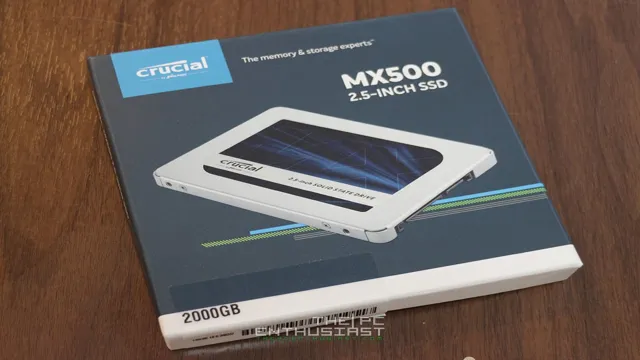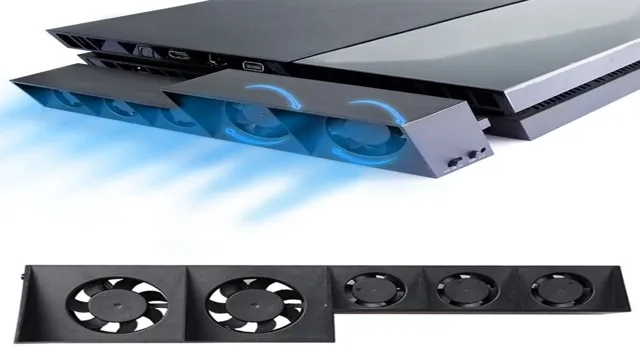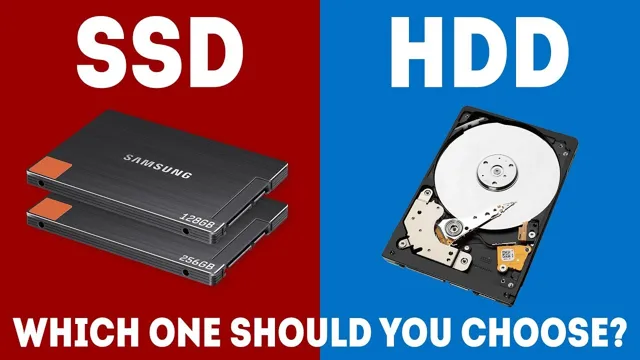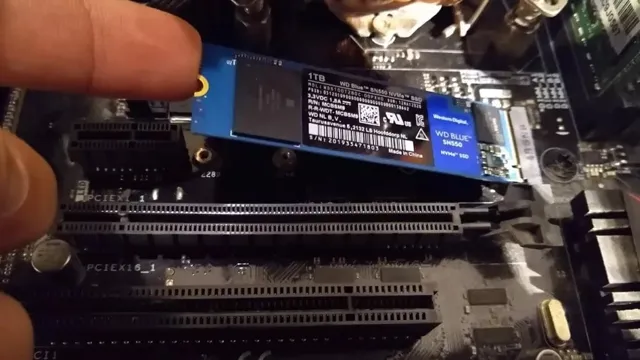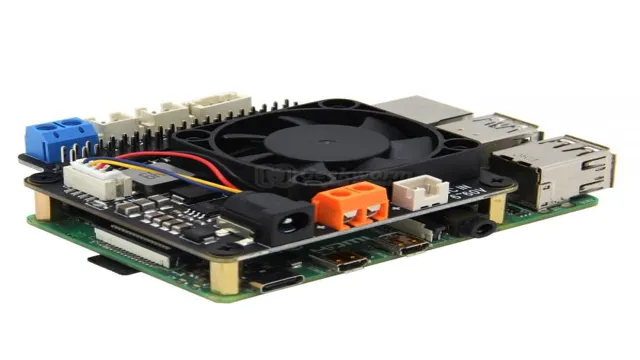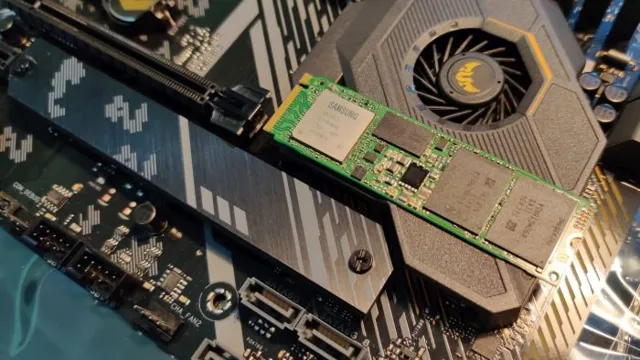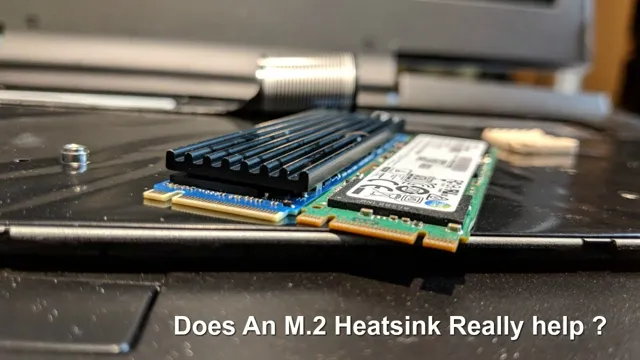Do you find yourself constantly running out of storage on your computer or laptop? Running out of storage space can be frustrating, especially when you need to save important files or install new software. But fear not – there’s a simple solution that can help you maximize your device’s storage: an mSATA adapter. An mSATA adapter is a small device that allows you to use mSATA SSDs (solid-state drives) as a storage option in laptops or computers that do not have an mSATA slot.
By using an mSATA adapter, you’ll be able to expand your storage capacity, making room for more files, documents, and applications. Not only does an mSATA adapter help you expand your storage, but it also improves your device’s performance. SSDs are faster and more efficient than HDDs (hard disk drives), which means your device will run more smoothly and quickly.
Plus, having more storage space frees up room for your device to operate, allowing it to function at its best. Another advantage of using an mSATA adapter is that it’s easy to install. Simply insert your mSATA SSD into the adapter and then plug the adapter into your device’s SATA port.
Installing an mSATA adapter is a quick and simple way to upgrade your device’s storage and performance. Overall, if you’re looking for a way to maximize your device’s storage and improve its performance, an mSATA adapter is a great option. With its easy installation and SSD capabilities, an mSATA adapter can help you enhance your device’s functionality, making it more efficient and reliable.
What Is an Msata Adapter?
An msata adapter is a small device that allows you to use an msata solid-state drive (SSD) with a device that doesn’t have an msata slot. This can come in handy if you’re upgrading an older laptop or desktop that doesn’t have an msata slot, or if you’re building a custom PC and want to use a smaller msata SSD for your operating system. The adapter typically plugs into a standard SATA port and has a slot for the msata SSD to plug into.
Some msata adapters also include a bracket to mount the SSD in a standard 5-inch drive bay. An msata adapter is a cost-effective solution for adding an msata SSD to a system without having to replace the entire motherboard or purchase a new device with an msata slot.
A Quick Overview of Msata Technology.
An Msata adapter is a small, compact device that allows you to use an Msata solid-state drive with a computer that does not have an Msata slot. This technology has become increasingly popular in recent years due to their small size and high speed. Msata adapters are commonly used in laptops, ultrabooks, and tablets to increase their storage capacity and speed up their performance.
It is easy to install an Msata adapter – you simply insert the adapter into an available slot on your laptop or desktop, and then connect the Msata SSD to it. This will allow your computer to recognize the SSD as a regular hard drive and you can start using it right away. Msata adapters are a great way to upgrade your computer’s storage capacity and improve its overall performance without having to purchase a new device.
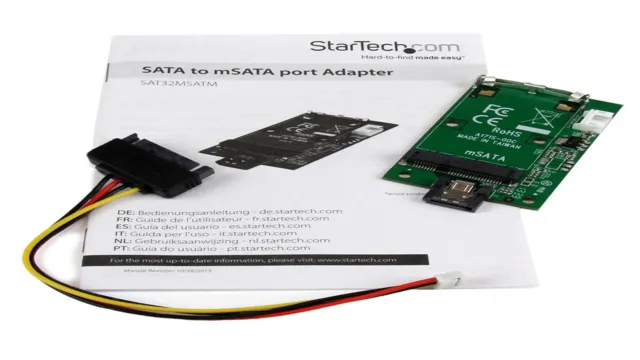
How the Msata Adapter Can Help Boost Your Storage Capacity.
An Msata adapter is a small connector that allows you to add more storage to your computer by using an Msata SSD. This is an excellent solution for those who are short on storage space or need faster read and write speeds. Msata adapters can be used in laptops, desktops, and even in some external hard drives.
They are easy to install and can significantly improve the performance of your device. Additionally, Msata adapters are relatively affordable, which makes them an ideal choice for those looking to expand their storage capacity without breaking the bank. With an Msata adapter, you’ll be able to store more files, load programs faster, and maintain a more efficient workflow overall.
So, if you’re looking to boost your computer’s storage capacity, consider investing in an Msata adapter today!
Choosing the Right Msata Adapter
When it comes to upgrading your computer’s storage, an msata adapter can be a great option. However, choosing the right adapter can be a bit confusing. One important consideration is the type of interface your computer has.
If it supports SATA III, then you’ll want to look for an adapter that can handle those speeds. Additionally, you’ll want to make sure the adapter has a good heat sink to prevent overheating. Another factor to consider is the form factor of the adapter.
Some are designed to fit into a specific slot in your computer, while others are more universal. Finally, you’ll want to make sure the adapter is compatible with the type of ssd you plan to use. Doing your research and choosing carefully can ensure that your new msata adapter will work smoothly and provide a significant boost in storage and performance.
Factors to Consider When Choosing an Msata Adapter.
When looking to choose the right MSATA adapter, there are a few crucial factors to keep in mind. Firstly, you want to make sure that the adapter is compatible with your device and its operating system. It’s also important to consider the speed and performance of the adapter, as well as its storage capacity.
The adapter’s form factor may also be a consideration if you’re limited on space. Finally, you’ll want to think about the brand and make sure that you’re buying from a reputable manufacturer to ensure quality and reliability. Overall, taking the time to carefully consider these factors will help you choose the right MSATA adapter for your device and your specific needs.
Compatibility Issues You Need to Watch Out For.
When it comes to choosing the right Msata Adapter for your computer, it’s important to watch out for compatibility issues. One of the main concerns is finding an adapter that is compatible with your specific motherboard or device. Some adapters may only work with certain chipsets, so it’s important to do your research or consult with a professional before making a purchase.
Another issue to keep in mind is the physical size of the adapter. Msata adapters come in different sizes, so you need to make sure you choose the right one that fits into your device. Finally, it’s important to consider the type of data transfer speeds you need.
Some adapters may offer faster transfer speeds than others, so it’s important to choose one that meets your needs. By taking these factors into consideration, you can ensure that you choose the right Msata Adapter for your specific needs.
Top-Rated Msata Adapters in the Market Today.
If you’re looking to upgrade your computer’s storage capacity or speed, an mSATA adapter can be an excellent investment. These small devices allow you to install an mSATA SSD card, effectively increasing your computer’s storage capabilities. However, with so many options available on the market today, it can be challenging to know which adapter is right for you.
To choose the right mSATA adapter, you’ll want to consider factors such as compatibility with your computer’s hardware, the speed and capacity of the adapter, and the brand’s reputation. Some of the top-rated mSATA adapters in the market today include the StarTech.com SAT32MSATPEX mSATA to SATA adapter, the Kingwin MB525SK-B mobile rack, and the Inateck mSATA to USB
0 adapter. No matter which adapter you choose, be sure to do your research and read reviews before making a purchase to ensure that you’re getting the best device for your needs.
Installation Process for Your Msata Adapter
If you’re looking to enhance the performance of your computer, an msata adapter can be the perfect addition. This device allows you to connect an mSATA SSD to your system, boosting its overall capabilities. The first step in the installation process is to ensure you have the necessary tools and equipment, including a screwdriver and the adapter itself.
Once you have these, you need to locate the msata slot in your computer, which is typically found near the WiFi card. Carefully insert the adapter into the slot, taking care not to force it in or damage any of the surrounding components. Screw the adapter in place using the screws provided, and then attach the mSATA SSD to the adapter.
Finally, secure the SSD with the screws provided, and you’re all set. Your computer should now be able to take advantage of the faster read and write speeds offered by the SSD, giving you a significant performance boost. Overall, installing an msata adapter is a relatively simple process that can have a big impact on your computer’s performance.
Step-by-Step Guide to Installing Your Msata Adapter.
Installing an msata adapter is a straightforward process that can enhance the performance of your device. Firstly, ensure that your device is turned off and all power cords are disconnected. Locate the msata slot and remove the cover, if necessary.
Insert the msata adapter into the slot and secure it with screws. Connect the power cable to its respective port, and turn on your device. Once your operating system is up and running, download the necessary drivers for the msata adapter and install them.
Finally, ensure that your device is recognizing the adapter. You’re all set! Your device should now run faster and more efficiently. Remember to take precautions while working with electronic components and static electricity.
With this simple installation process, you can bring new life to your device with an msata adapter.
Common Troubleshooting Tips for Msata Adapter Installation.
“Msata adapter installation.” When it comes to installing an Msata adapter, there are a few common troubleshooting tips that can come in handy. First and foremost, it’s important to make sure that you have the correct adapter for your device.
This may seem obvious, but it’s easy to get confused with the wide array of adapters available. Once you have the right adapter, it’s time to install it. Before you begin, be sure to ground yourself to prevent any static electricity from damaging the device.
When you’re ready, open up your device and locate the Msata slot. Insert the adapter into the slot and secure it in place. Then, connect the necessary cables and reassemble your device.
If you’ve followed these steps and your adapter is still not working, try updating your device’s drivers or checking for any firmware updates for the adapter. By following these tips, you can successfully install your Msata adapter and ensure that it’s functioning properly.
Conclusion: Upgrading Your Storage with an Msata Adapter
In conclusion, the msata adapter is like the unsung hero of computer accessories – small in size but mighty in its impact. It allows for seamless integration of msata SSDs into devices that may not have been originally designed for it, unleashing a whole new level of speed and storage capacity. Think of it as the ultimate sidekick, always ready to save the day and boost your device’s performance.
So next time you’re in need of a mini miracle worker for your computer, look no further than the trusty msata adapter.”
FAQs
What is an msata adapter?
An msata adapter is a small device that allows you to convert the msata interface to another interface.
What are some common uses for an msata adapter?
Some common uses for an msata adapter include adding an msata drive to a desktop computer or using an msata drive in a laptop that does not have an msata interface.
Are all msata adapters created equal?
No, not all msata adapters are created equal. It is important to choose an adapter that is compatible with your device and supports the features you need.
Can I use an msata adapter to connect multiple msata drives?
Yes, some msata adapters allow you to connect multiple drives using a single interface. This can be useful for expanding your storage capabilities.
What are the advantages of using an msata adapter?
The advantages of using an msata adapter include faster data transfer speeds, smaller size, and lower power consumption compared to traditional hard drives.
